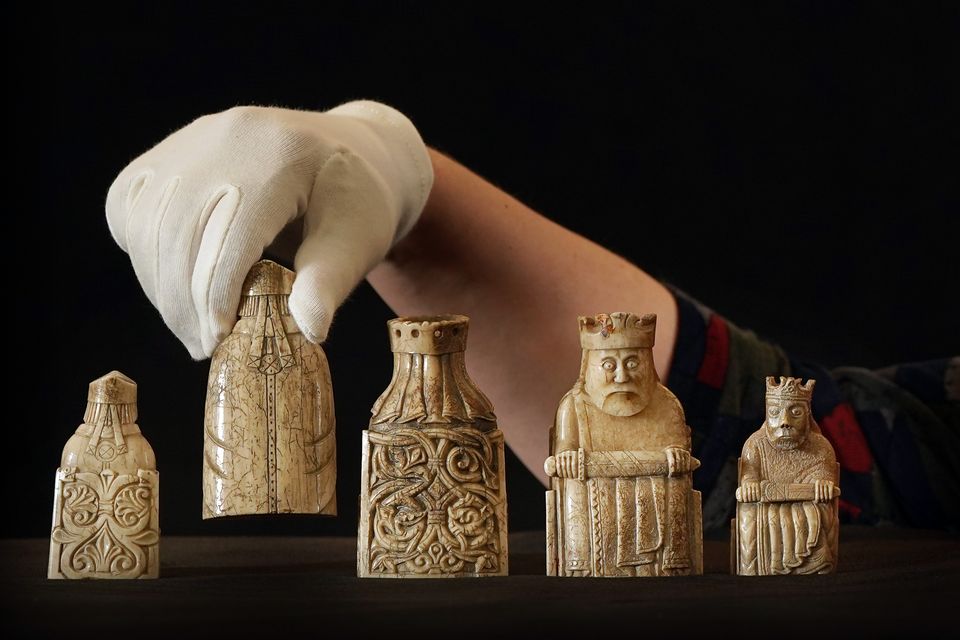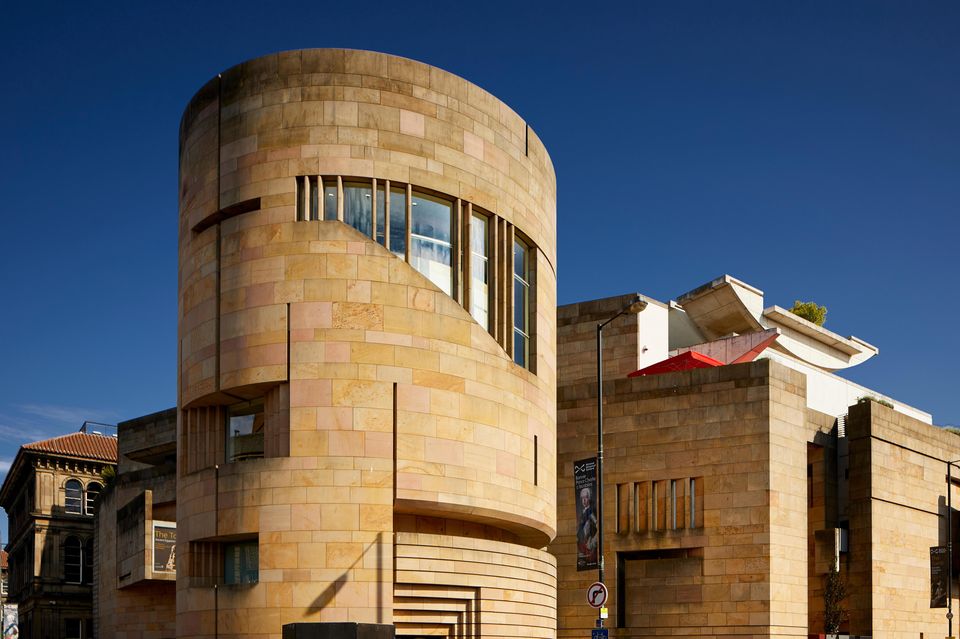The “iconic” Lewis chessmen have been redisplayed in a case which allows visitors to see their backs for the first time.
The display at the National Museum of Scotland in Edinburgh means people can now view the pieces “in the round” and appreciate the intricate carving from all angles.
The pieces, thought to have probably been made in Norway around 1200, were part of a large hoard discovered in Lewis in the early 19th century.
Eleven are in the National Museums Scotland (NMS) collection while the remaining 82 are in the British Museum’s collection, six of which are on loan to Museum nan Eilean in Lewis.
Made from walrus ivory and sperm whale teeth, the characters are well known for their distinctive expressions, however curators say their backs are just as interesting and intricately detailed.
The chess pieces are intricately carved (Stewart Attwood/PA)
Ten of the pieces from the NMS collection have now been redisplayed, with new lighting, layout and refreshed interpretation.
Alice Blackwell, senior curator of medieval archaeology and history at NMS, said: “The Lewis chess pieces are much loved thanks in part to their iconic expressions and poses, however these are objects which were designed to be appreciated from all angles.
“After all, each player sees the backs of their own pieces. The carver has really gone to town on the throne backs in particular, with entwined tendrils and knotwork that are really sumptuous compared to the simpler fronts.
“I’m delighted that visitors to the National Museum of Scotland will now have the chance to get to know these charming characters in the round.”
One of the 11 pieces – a bishop – is displayed in a different gallery in the museum which explores the medieval church.
The hoard discovered on Lewis contained 93 gaming pieces in total, from at least four chess sets as well as other games.
The pieces are on display at the National Museum of Scotland in Edinburgh (Mark Waugh/Alamy/PA)
At the time the pieces were made, Lewis was part of the Norse-Gaelic Kingdom of the Isles, encompassing islands and land along the west coast of Scotland as well as the Isle of Man.
There was a strong Scandinavian influence in the region and Norway controlled the kingdom at times.
NMS said it is not known who buried the pieces or why.
They may have been the property of a merchant, sailing from Scandinavia to Scotland, Ireland or the Isle of Man to sell the highly-prized playing sets.
However given that Lewis was home to powerful people with close ties to Norway, the pieces may instead have been the treasured possession of a local prince, bishop or other leader.
They are now positioned more prominently at the museum in Edinburgh, at the entrance to the Kingdom of the Scots gallery, and are visible from the adjacent Hawthornden Court.

